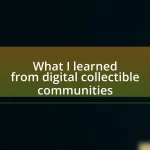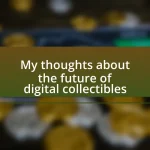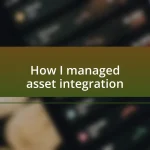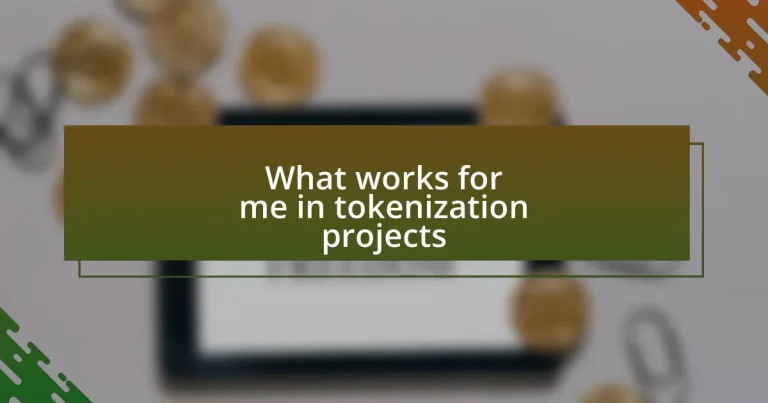Key takeaways:
- Tokenization bridges traditional assets with the digital world, enhancing accessibility, liquidity, and security through blockchain technology.
- Successful tokenization projects require a clear strategy, legal compliance, and collaboration among a diverse team.
- Real-world applications, like music rights and real estate, showcase the democratization of investments and increased transparency for consumers.
- Challenges in implementation include navigating regulatory requirements, technical integration, and overcoming user skepticism towards new systems.
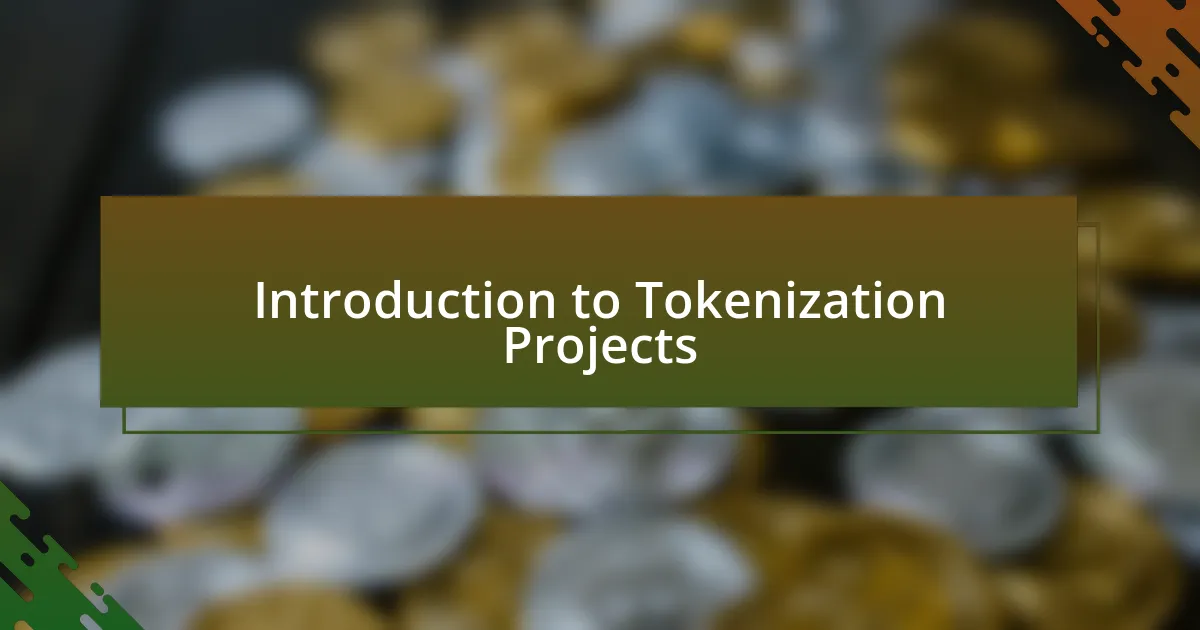
Introduction to Tokenization Projects
Tokenization projects are fascinating because they represent a bridge between traditional assets and the digital world. When I first encountered tokenization, I was struck by the way it transforms physical assets into digital tokens that can be easily traded or sold. Isn’t it amazing how this technology can change the ownership landscape, making it more accessible to a wider audience?
In my experience, the essence of a successful tokenization project lies in understanding the assets at play and the needs of the market. I remember grappling with the complexities of connecting real-world assets to the digital realm. Each decision I made felt monumental, and I realized that clarity and strategy are crucial for steering these projects toward success. Have you ever faced a similar challenge in your ventures?
Conversely, I’ve found that the emotional aspect of tokenization can often be overlooked. Participants in these projects frequently experience a mix of excitement and apprehension about this innovative approach. It raises a question: How do we build trust in a system that’s still very much evolving? Through transparency and education, we can pave the way for broader acceptance and understanding of tokenized assets.
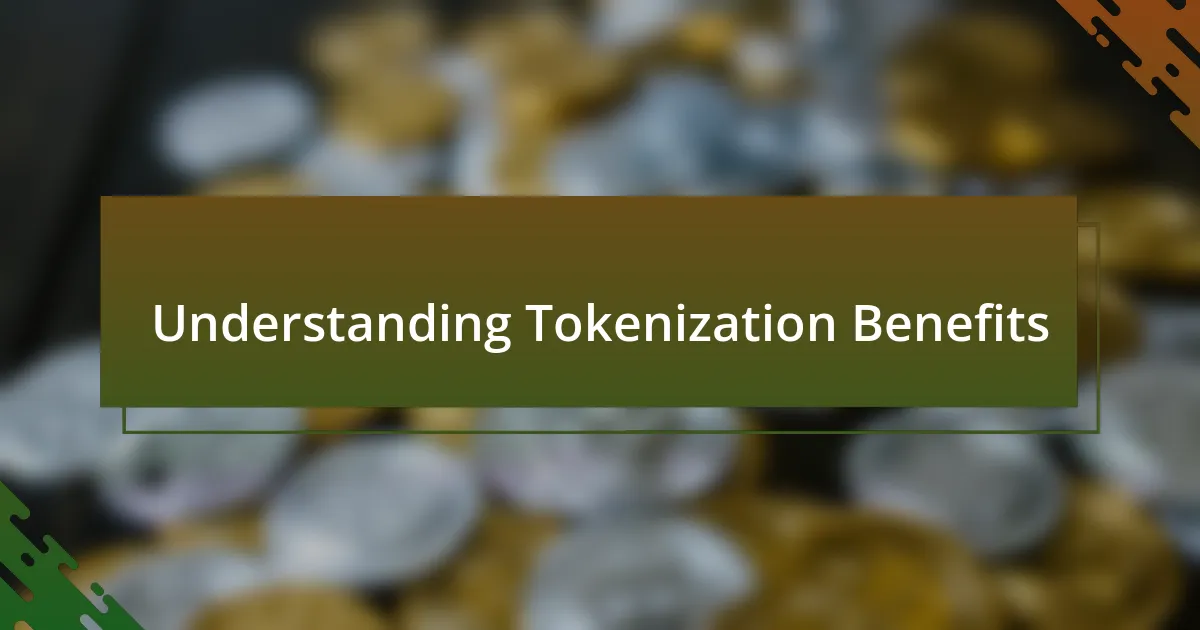
Understanding Tokenization Benefits
Tokenization offers several key benefits that can significantly enhance asset management. One of the advantages I’ve observed is increased liquidity, allowing assets that were historically illiquid, such as real estate or collectibles, to be traded more easily. For instance, I once participated in a project where a fraction of a luxury property was tokenized, enabling investors to buy in at a much lower entry point. This not only opened investment opportunities for many but also created a vibrant market for previously stagnant assets.
Additionally, tokenization can enhance accessibility and lower barriers to entry. I recall attending a conference where a speaker emphasized how tokenization democratizes investing. This resonated with me, as I’ve seen many individuals who previously thought investing was out of reach now able to partake in diverse opportunities through micro-investments in tokenized assets. This shift not only provides individuals with greater freedom but also enriches the investment landscape overall.
Moreover, security is a fundamental benefit that tokenization brings to the table. With blockchain technology underpinning many tokenization projects, the ability to create tamper-proof records enhances trust among participants. I remember a moment of realization during an early project when I presented the technical safeguards to skeptics; their hesitance began to fade as they grasped the potential for reduced fraud and increased confidence in their transactions.
| Benefit | Description |
|---|---|
| Increased Liquidity | Transforms illiquid assets into tradable tokens, enabling easier buying and selling. |
| Enhanced Accessibility | Reduces barriers to entry, allowing more people to invest through micro-investments. |
| Improved Security | Utilizes blockchain for tamper-proof records, boosting trust among participants. |
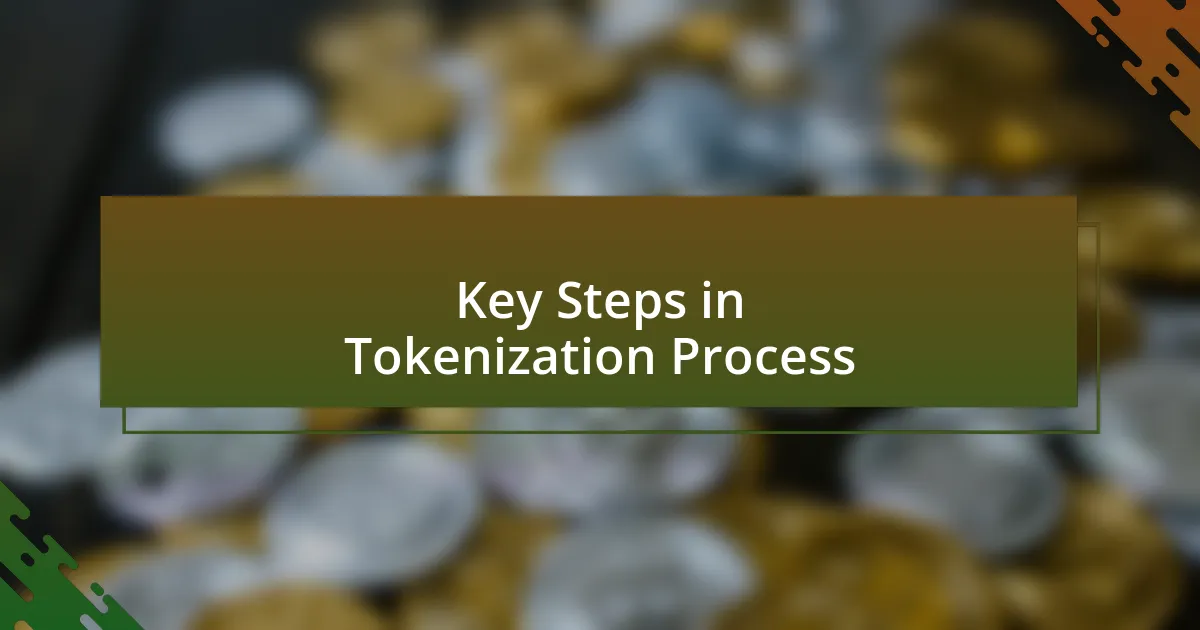
Key Steps in Tokenization Process
When embarking on a tokenization project, I find it crucial to begin with a clear strategy and defined objectives. The process often starts with identifying the asset that you want to tokenize. I experienced this firsthand when my team decided to tokenize a set of rare collectibles. It wasn’t just about the collectible itself; we had to understand its value, how it could be represented digitally, and who the target investors were. This foundational step laid the groundwork for a successful project.
From there, the next important steps typically include legal compliance, blockchain choice, and creating the token structure. Here’s a brief outline of these steps:
- Legal Compliance: Consult legal experts to ensure adherence to regulations and secure necessary approvals.
- Choosing the Right Blockchain: Select a blockchain platform that aligns with your project goals in terms of speed, cost, and security.
- Token Structure: Design the type of token, whether it’s a utility token or security token, depending on its intended use and compliance structure.
- Marketing Strategy: Develop a plan to create awareness and attract potential investors once the token is ready.
I vividly recall navigating the maze of compliance regulations; it was both daunting and enlightening. The experience underscored the importance of being thorough to avoid future pitfalls and to reassure hesitant investors. Each of these steps requires thoughtful consideration and collaboration, and I cannot stress enough how engaging with the right stakeholders early on made a significant difference in the project’s trajectory.
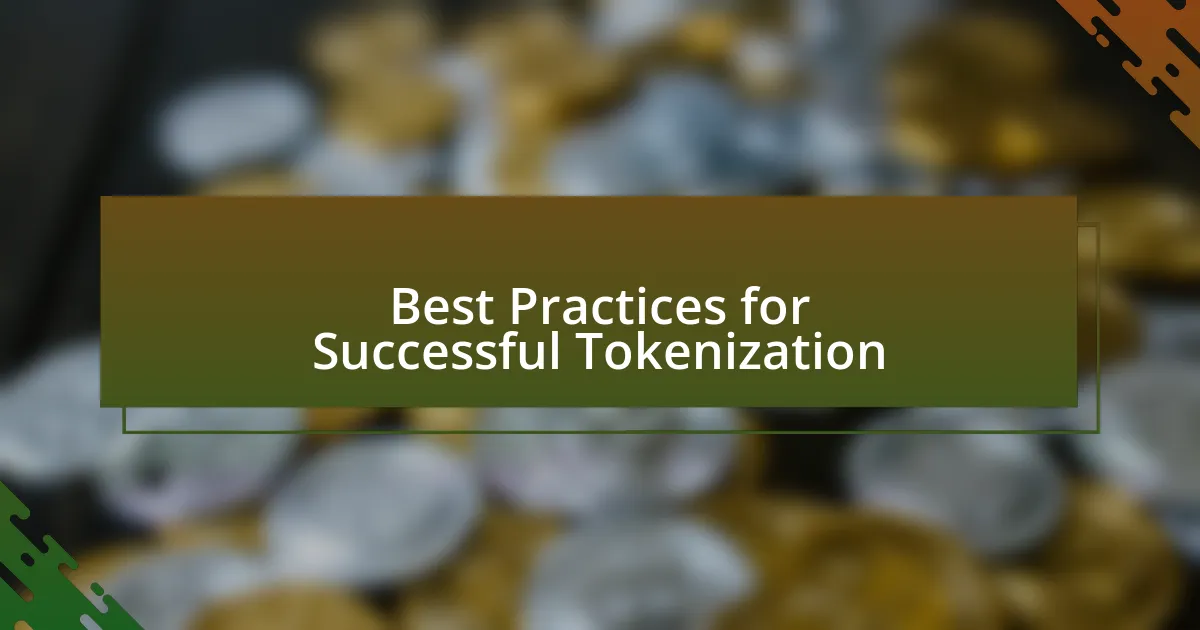
Best Practices for Successful Tokenization
One of the best practices I’ve learned in tokenization projects is the importance of building a solid team with diverse expertise. In my last project, assembling a group that included tech-savvy developers, legal advisors, and marketing specialists was eye-opening. It was fascinating to see how each person brought a unique perspective, ultimately enriching the project and leading to well-rounded decision-making. How often do we underestimate the value of collaboration?
Another critical aspect is to remain flexible throughout the process. I recall a pivotal moment when we had to pivot our blockchain choice midway. Initially, we were set on one platform, but feedback from potential investors indicated they preferred another. This adaptability proved invaluable, as it affirmed our commitment to meeting the needs of the market. Embracing change can feel daunting, but it’s often where the real opportunities lie.
Lastly, never underestimate the power of a strong narrative around your token. When I pitched our project to investors, sharing the story behind the collectibles helped create an emotional connection. It wasn’t merely about selling a digital asset; it was about preserving history and offering a community experience. This shift in focus sparked genuine interest and a deeper understanding of the project’s value. Isn’t it amazing how storytelling can transform a mere concept into something meaningful?
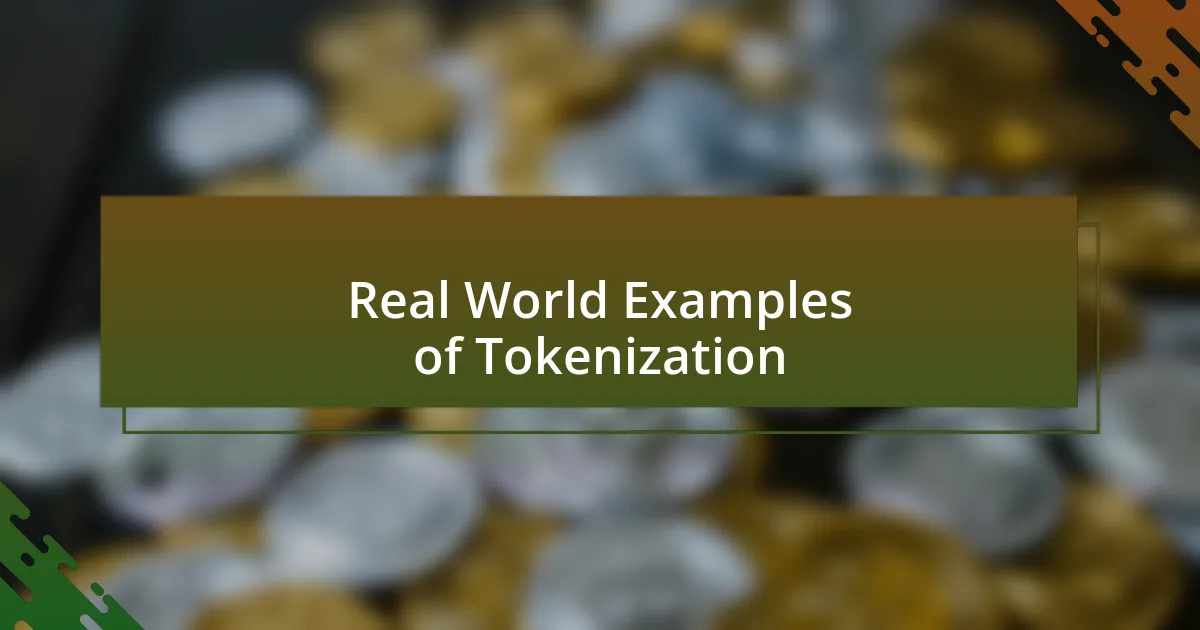
Real World Examples of Tokenization
Tokenization has made significant strides in various sectors, and one prominent example is the music industry. During a recent project, I collaborated with musicians to tokenize their albums, allowing fans to purchase a share of the music rights. This approach not only democratized access but also provided artists with a new revenue stream. How often do we consider the financial struggles of artists trying to make a living from their passion?
In the real estate sector, I witnessed a groundbreaking project where we tokenized shares of a high-rise building. By breaking down the property into fractions, more investors could participate, thus expanding the market. The thrill of seeing everyday individuals invest in real estate they previously deemed out of reach was incredible. Don’t you think it’s empowering to be part of democratizing such valuable assets?
Another compelling example is within the supply chain industry. I worked on a project that involved tokenizing product information, allowing consumers to trace the source of their goods. It’s fascinating to realize how transparency can foster trust between brands and customers. Have you ever wondered how much more confident you would feel making a purchase if you knew its entire story?
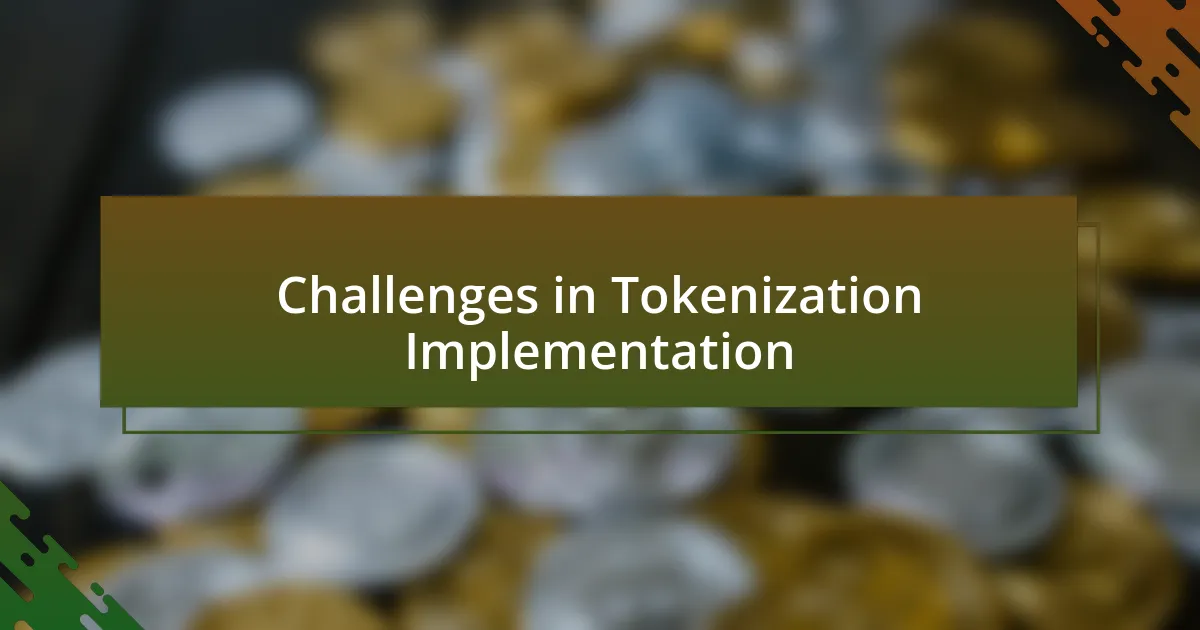
Challenges in Tokenization Implementation
Implementing tokenization comes with its share of hurdles. One challenge I encountered firsthand was the regulatory landscape. Navigating different regulatory requirements can feel overwhelming, especially since each jurisdiction has its own nuances. Have you ever experienced the frustration of trying to comply with policies that seem to change overnight?
Another significant hurdle is the technical integration of blockchain technology. During a recent project, I observed how the complexity of existing systems often slows down the deployment process. The team spent countless hours troubleshooting compatibility issues, leading me to question whether we truly understood the technological demands before plunging into implementation.
Lastly, user adoption is a critical challenge I often perceive. Tokenization offers groundbreaking possibilities, yet convincing users to shift from traditional methods can be an uphill battle. I recall a project where we faced skepticism from potential users hesitant to embrace something they couldn’t fully grasp—how do you bridge that gap between innovation and comfort?
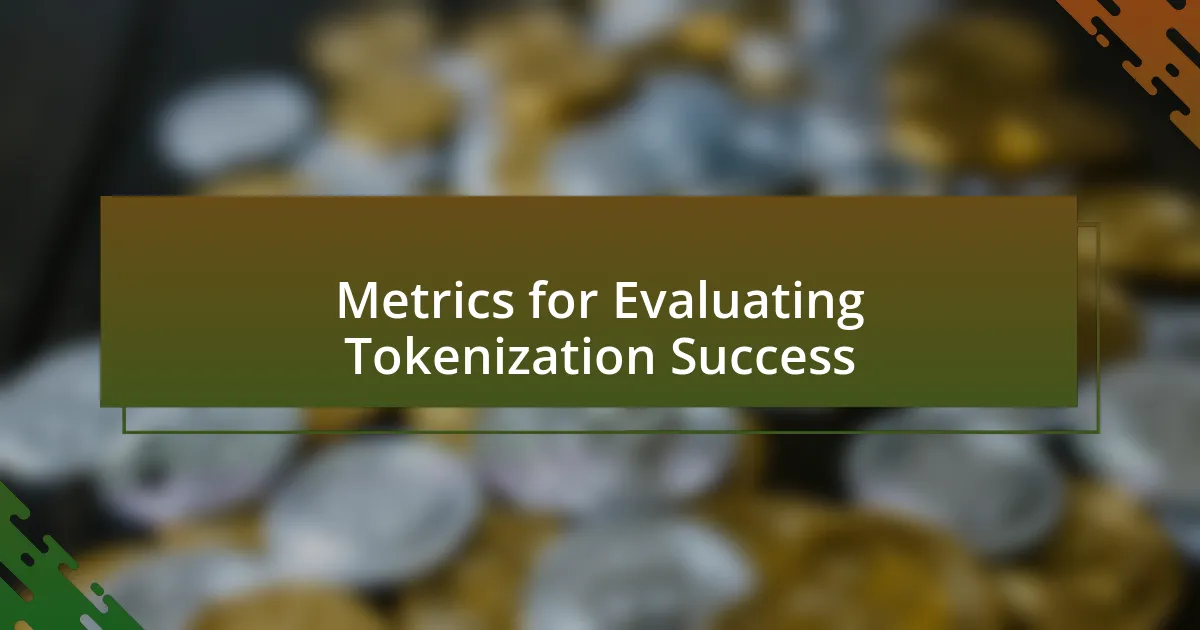
Metrics for Evaluating Tokenization Success
When evaluating the success of tokenization projects, I find that clarity in metrics is key. For instance, measuring user engagement can reveal insights into how well the tokenized system resonates with its intended audience. I remember a project where we tracked the frequency of token transactions; seeing those numbers rise was a moment of triumph, demonstrating that users were not just signing up but actively participating.
Another vital metric is the performance of the tokenized asset itself. I once worked on a project where we analyzed market liquidity and price stability. Those indicators were crucial in assessing how our tokens were perceived and valued. Did the project generate tangible benefits? Yes, we could see the positive correlation between increased liquidity and user trust, painting a picture of a sustainable ecosystem.
Finally, I can’t stress enough the importance of regulatory compliance as a metric. In one of my projects, we set benchmarks for meeting local regulations, which not only mitigated risks but also instilled confidence among users. How can you measure success if you aren’t aligned with the legal frameworks governing your project? I believe that prioritizing compliance could be the difference between a thriving tokenization initiative and one that struggles to get off the ground.




